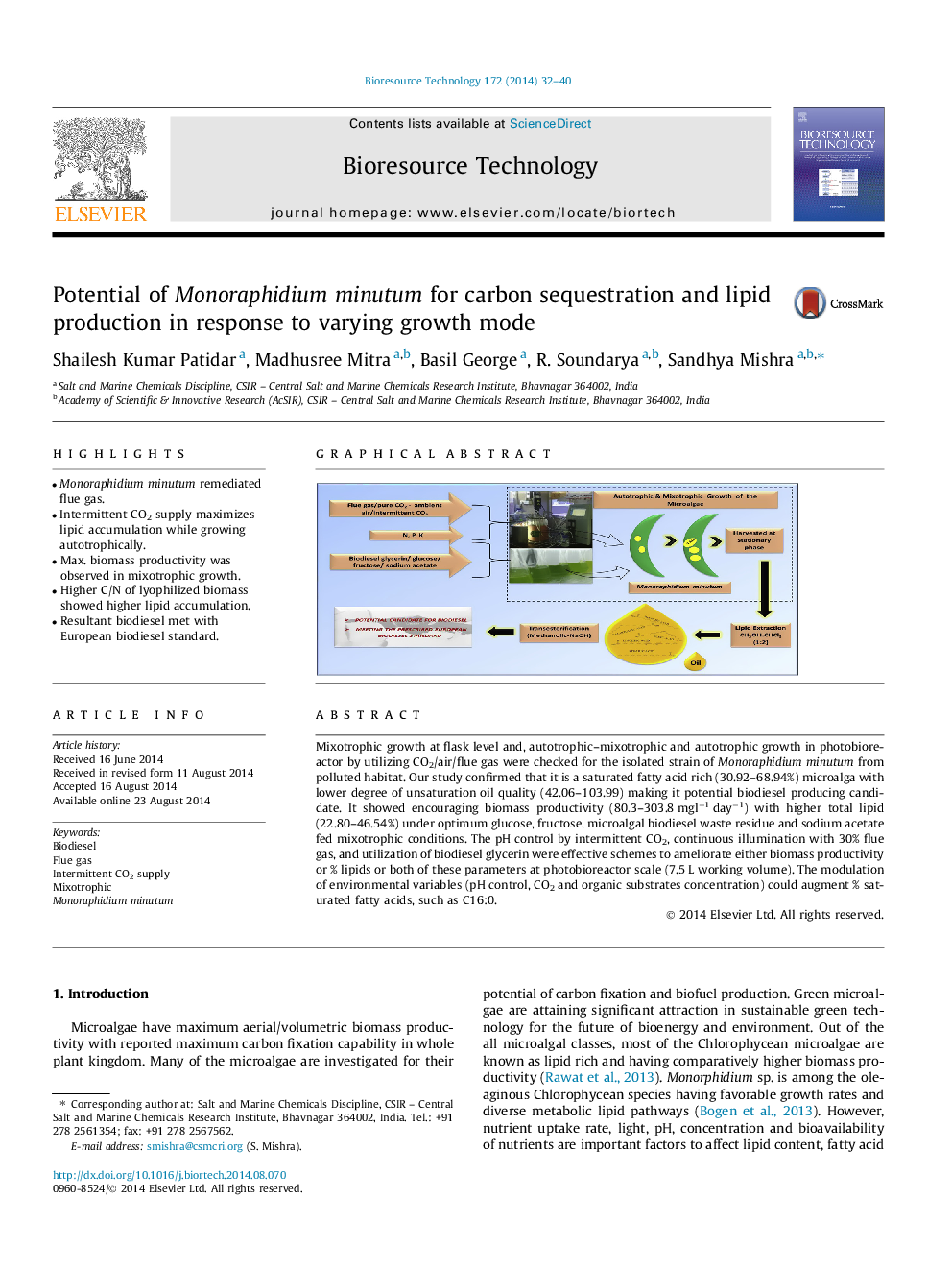| Article ID | Journal | Published Year | Pages | File Type |
|---|---|---|---|---|
| 680530 | Bioresource Technology | 2014 | 9 Pages |
•Monoraphidium minutum remediated flue gas.•Intermittent CO2 supply maximizes lipid accumulation while growing autotrophically.•Max. biomass productivity was observed in mixotrophic growth.•Higher C/N of lyophilized biomass showed higher lipid accumulation.•Resultant biodiesel met with European biodiesel standard.
Mixotrophic growth at flask level and, autotrophic–mixotrophic and autotrophic growth in photobioreactor by utilizing CO2/air/flue gas were checked for the isolated strain of Monoraphidium minutum from polluted habitat. Our study confirmed that it is a saturated fatty acid rich (30.92–68.94%) microalga with lower degree of unsaturation oil quality (42.06–103.99) making it potential biodiesel producing candidate. It showed encouraging biomass productivity (80.3–303.8 mgl−1 day−1) with higher total lipid (22.80–46.54%) under optimum glucose, fructose, microalgal biodiesel waste residue and sodium acetate fed mixotrophic conditions. The pH control by intermittent CO2, continuous illumination with 30% flue gas, and utilization of biodiesel glycerin were effective schemes to ameliorate either biomass productivity or % lipids or both of these parameters at photobioreactor scale (7.5 L working volume). The modulation of environmental variables (pH control, CO2 and organic substrates concentration) could augment % saturated fatty acids, such as C16:0.
Graphical abstractFigure optionsDownload full-size imageDownload as PowerPoint slide
